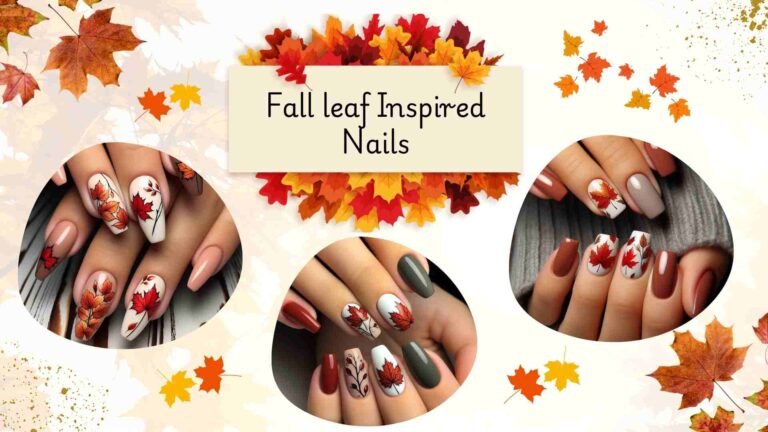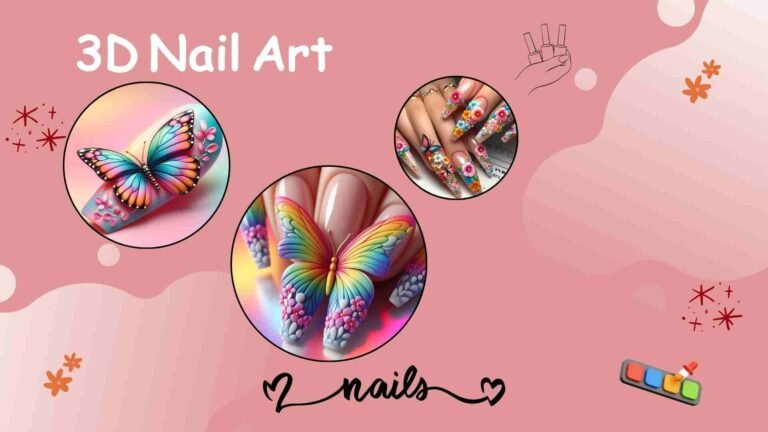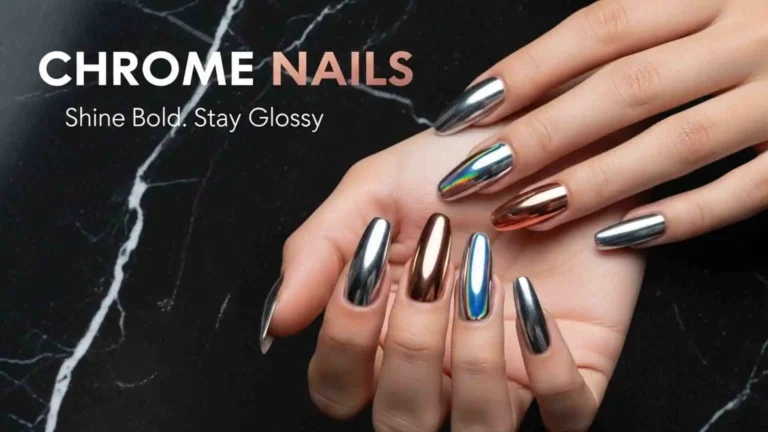Dip Nails: The Ultimate Guide to Long-Lasting, Salon-Quality Manicures at Home
If you’re someone who loves to keep your nails looking fresh and polished, you’ve probably heard about dip nails. Dip nails, also known as dip powder nails or SNS nails, have taken the beauty world by storm for their durability and ease of application. But what exactly are they? How do they differ from other types of manicures, and why are so many people obsessed with them? Let’s explore everything you need to know about dip nails in detail!
What Are Dip Nails?
At their core, They combine elements of gel and acrylic nails, giving you the strength of acrylic and the shine of gel without the need for a UV light or excessive filing. In the dip powder manicure process, nails are coated with a resin (similar to glue) and then dipped into a colored acrylic powder. This process is repeated until the desired thickness and color are achieved. The result is a manicure that is strong, long-lasting, and beautiful.
So, why is it called “dip nails”? Quite literally, it’s because your nails are “dipped” into the powder! And it’s so satisfying to watch the process unfold, especially if you’re doing it at home.
The Step-by-Step process
Whether you’re getting your nails done at a salon or trying it yourself at home, here’s a breakdown of the steps involved:
- Nail Prep: Start by cleaning your nails thoroughly. Any old polish must be removed, and nails should be trimmed, shaped, and filed to your preference. Your cuticles will also need to be pushed back.
- Apply the Base Coat: A special base coat (a bonding agent similar to glue) is applied to each nail. This is what allows the powder to stick to the nail.
- Dipping Time: This is the fun part! Once the base coat is applied, you will dip your nails into the acrylic powder. Most people dip each nail in one by one to ensure even coverage. The powder comes in a variety of colors, from soft neutrals to bold and bright shades.
- Repeat Layers: For the best results, the base coat and powder application are repeated 2-3 times on each nail to build up thickness and color.
- Activating the Dip: After the final powder layer, an activator liquid is applied to harden the powder and lock in the color. It helps cure the powder, making it solid and chip-resistant.
- Top Coat for Shine: A final top coat is applied to seal the nails and give them a shiny, smooth finish. This top coat also provides protection, keeping the nails strong for weeks.
Why Are these Nails So Popular?
You might be wondering what all the hype is about. Here are some key reasons why people are switching to dip powder manicures:
- Long-Lasting: These nails can last anywhere from 3 to 4 weeks without chipping, which is significantly longer than traditional polish and even some gel manicures.
- No UV Light: One of the main reasons people love these nails is that they don’t require UV light to cure, unlike gel nails. This is a big bonus for those who are concerned about prolonged UV exposure.
- Less Odor: Compared to acrylic nails, These nails have far less odor during application since they don’t involve the use of liquid monomer (a strong-smelling chemical).
- Strength: These nails are strong, but they don’t feel as thick or heavy as acrylics. They also tend to be more flexible, which some people find more comfortable.
- Easy Removal: When it’s time to remove these nails, the process is relatively easy and doesn’t cause as much damage to the natural nail as acrylics can (when done properly).
- Versatility: You can get nearly any color or design you want with dip powder, and it works well with nail art, glitter, and other creative enhancements.
Dip Nails vs. Other Types of Manicures
So how do these nails stack up against gel nails, acrylics, or even solar nails? Here’s a comparison to give you an idea of what’s different:
Dip Nails vs. Gel Nails
- Durability: These nails tend to last longer (up to 4 weeks) compared to gel nails, which typically last 2-3 weeks before chipping.
- Application Process: Gel nails require curing under UV light, while dip nails do not. This makes these nails a quicker process and safer for those worried about UV exposure.
- Thickness: These nails usually feel lighter and more natural than gel nails, which can sometimes feel thicker due to the layers of gel.
Dip Nails vs. Acrylic Nails
- Damage: Acrylic nails involve more filing and use of harsher chemicals, which can weaken your natural nails over time. Dip nails are generally less damaging when properly applied and removed.
- Odor: Acrylics have a strong, often unpleasant smell due to the liquid monomer used, whereas dip nails are much more odor-friendly.
- Flexibility: Dip nails are a bit more flexible and natural-feeling compared to the rigid structure of acrylics.
Dip Nails vs. Solar Nails
- Application: Solar nails are a type of acrylic nails, so the process involves a liquid and powder system. Dip nails, on the other hand, use a dipping process with no liquid monomer.
- Durability: Solar nails are known for their extreme durability, but dip nails are also strong while offering a lighter feel. Solar nails often have a higher shine, while dip nails focus more on strength and color vibrancy.
The Pros and Cons of Dip Nails
Let’s break down some of the key pros and cons to give you a clearer picture of whether dip nails are right for you.
| PROS | CONS |
|---|---|
| Long-lasting: As mentioned, dip nails can last up to a month, which is a huge win if you don’t want to constantly redo your nails. | Requires special removal: Dip nails need to be soaked off with acetone, which can dry out your nails if not done correctly. |
| No UV exposure: This is a big advantage for many who are concerned about the potential skin damage from UV lights used in gel manicures. | May weaken nails: If you don’t give your nails proper breaks between applications or if the removal process is done incorrectly, dip nails can weaken your natural nails over time. |
| Less odor: Compared to acrylics, dip nails have very little smell during application. | Potential for allergic reactions: Some individuals may experience allergic reactions to the resins or powders used in dip nails. |
| Customizable: With so many colors and finishes to choose from, the possibilities for customization are endless. | |
| Easier to apply at home: Dip nail kits are widely available, and many find the process less complicated than gels or acrylics. |
Are Dip Nails Safe?
Yes, dip nails are generally considered safe when applied and removed correctly. However, there are a few things to keep in mind:
- Hygiene is Key: If you’re getting dip nails done at a salon, make sure they aren’t dipping multiple clients into the same powder pot. This can cause the spread of bacteria or infections. A reputable salon will pour the powder into a separate container for each customer.
- Take Breaks: Like any nail enhancement, it’s important to take breaks between manicures to give your natural nails a chance to breathe and recover. Overuse of dip nails can lead to thinning or weakening of the natural nail plate.
How to Remove Dip Nails at Home
Removing dip nails at home is pretty simple but requires patience. Here’s how to do it:
- File off the Top Layer: Use a coarse nail file to gently file away the shiny topcoat of your dip nails.
- Soak in Acetone: Soak cotton balls in acetone and place them on each nail. Then, wrap each finger in foil to hold the cotton in place. Leave them on for 10-15 minutes.
- Gently Remove the Dip: After soaking, the dip powder should start to come off easily. Use a wooden cuticle pusher to gently push the softened dip away from your nails.
- Moisturize: Acetone can be drying, so be sure to moisturize your nails and cuticles after removal.
DIY Dip Nails: Can You Do It at Home?
Absolutely! One of the best things about dip nails is that they are relatively easy to do at home. Many companies sell at-home dip nail kits that come with everything you need, from base coats to powders and activators.
If you’re trying dip nails for the first time, here are a few tips to help you succeed:
- Start with a Basic Color: Get the hang of the process before diving into more complex designs or multiple layers.
- Follow Instructions Carefully: Each kit might have slightly different instructions, so follow them closely for the best results.
- Be Patient: Dip nails take some practice, especially when it comes to applying even layers of powder. Don’t rush the process!
Final Thoughts
Dip nails have become a go-to option for people who want long-lasting, strong, and gorgeous nails without the need for a salon visit every two weeks. With proper care, dip nails can last weeks without chipping, giving you more time to enjoy your beautiful manicure and less time worrying about touch-ups. Whether you’re a salon regular orDip nails are ideal for those looking for a long-lasting, salon-quality manicure without the hassle of UV light. They combine the benefits of acrylic and gel nails, but with less odor and faster application. You can even do them at home with a simple dip powder kit.
Dip nails typically last about 3-4 weeks without chipping, making them a great option if you want durability. If you’re ready to dive deeper into DIY dip nails, the process involves applying a base coat, dipping your nails into colored powder, and repeating for thickness before sealing it all with a top coat.
For those who love the strength of acrylics but prefer a thinner feel, dip nails are perfect! Keep an eye on new innovations in the dip powder world because brands are constantly coming out with fresh colors, glitter options, and healthier formulas.
Would you like to explore specific designs, dip nail care tips, or new trends for your article expansion?







